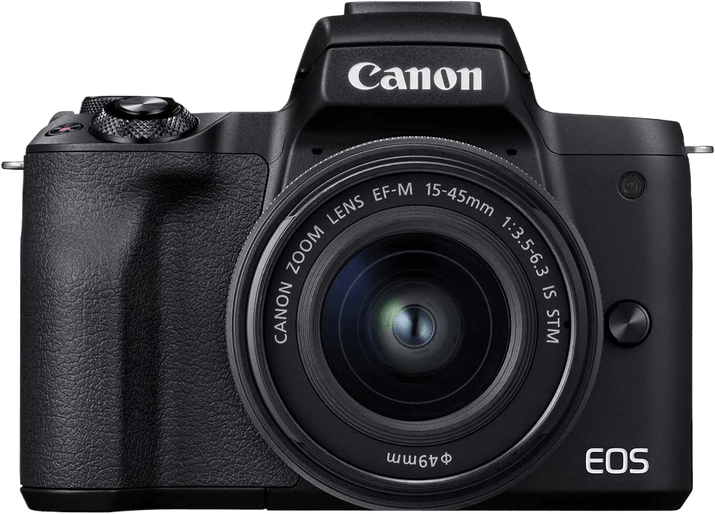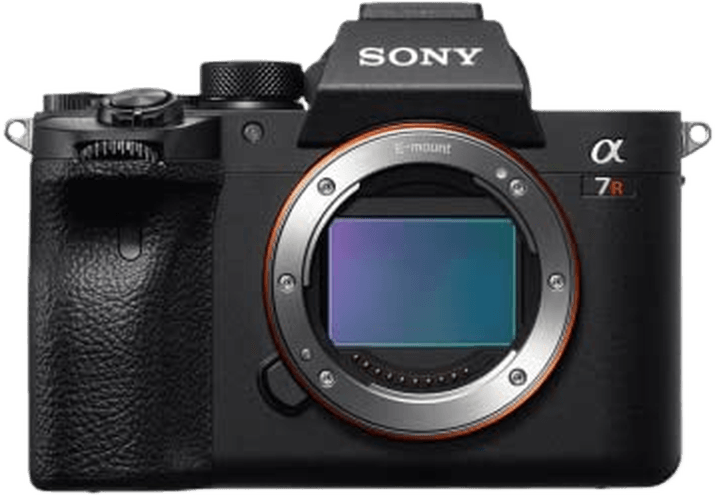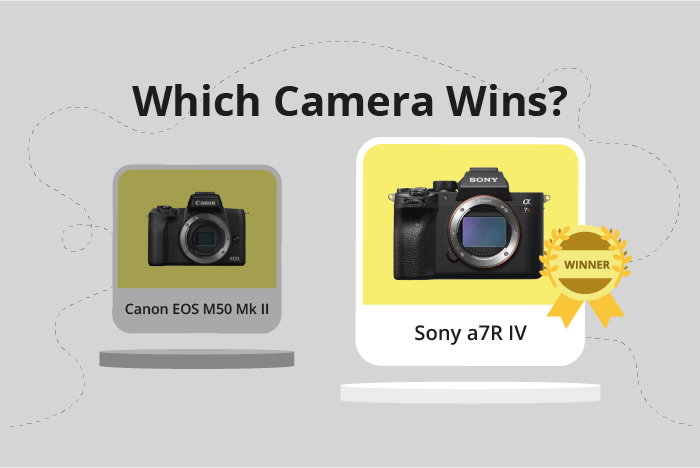Canon EOS M50 Mark II vs Sony a7R IV Comparison
Canon EOS M50 Mark II

Sony a7R IV

The Sony a7R IV emerges as the winner in this comparison, scoring 84/100, while the Canon EOS M50 Mark II scores 59/100. Both cameras are mirrorless and were released in 2019 and 2020, respectively. Their sizes are similar, with the Sony a7R IV being slightly larger and heavier than the Canon EOS M50 Mark II.
The Sony a7R IV’s higher score shows that it is a better camera, offering more advanced features and capabilities. This justifies its higher launch price of $3500 compared to the Canon EOS M50 Mark II’s $750. However, the Canon EOS M50 Mark II’s lower price and lighter weight make it a more budget-friendly and portable option.
Taking these factors into account, it’s evident that the Sony a7R IV is the superior choice for professional photographers, while the Canon EOS M50 Mark II may be more suitable for those who prioritize affordability and portability.
Canon EOS M50 Mark II vs Sony a7R IV Overview and Optics
The Sony a7R IV outperforms the Canon EOS M50 Mark II in optics, with a score of 85/100 compared to the Canon’s 59/100. Both cameras share similarities in their specifications, such as a CMOS sensor, 10 fps shooting speed, and lens mounts compatible with their respective brand’s lenses. However, the differences between the two models are significant, leading to the Sony a7R IV’s higher score.
The Sony a7R IV excels with its 61.2-megapixel resolution, full-frame sensor, and image stabilization. The higher resolution allows for more detailed images, while the full-frame sensor captures more light and delivers better image quality. The inclusion of image stabilization helps reduce the effects of camera shake, resulting in sharper images. Additionally, the a7R IV has a DXOMARK sensor score of 99, indicating superior image quality and low-light performance.
On the other hand, the Canon EOS M50 Mark II has a lower resolution of 24 megapixels and an APS-C sensor. This smaller sensor size may limit image quality and low-light performance compared to the Sony a7R IV. Furthermore, the Canon M50 Mark II lacks image stabilization and has a lower DXOMARK sensor score of 58. The camera’s Digic 8 processor, however, is a reliable and fast image processor, ensuring efficient performance and image processing.
The Sony a7R IV’s superior optics make it a better choice for photographers seeking high-resolution images, better low-light performance, and image stabilization. The Canon EOS M50 Mark II, while not as advanced in optics, still offers decent performance and image quality for casual photographers or those on a budget. Ultimately, the choice between these two cameras depends on the individual’s needs and preferences.
Canon EOS M50 Mark II vs Sony a7R IV Video Performance
The Canon EOS M50 Mark II outperforms the Sony a7R IV in video capabilities with a score of 91/100 compared to the Sony’s 70/100. Both cameras share some common features, such as 4K maximum video resolution and 3840 x 2160 maximum video dimensions. Additionally, both cameras offer built-in time-lapse functionality.
The Canon EOS M50 Mark II excels in video performance largely due to its maximum video frame rate of 120fps, allowing for smooth and high-quality slow-motion footage. This is a significant advantage over the Sony a7R IV, which offers a maximum video frame rate of just 30fps. The higher frame rate of the Canon camera provides more versatility and creative options for videographers.
Although the Sony a7R IV has a lower video score, it is worth noting that its video capabilities are still impressive, and it may be more suitable for certain users. The camera’s 4K video resolution and built-in time-lapse functionality are valuable assets for those who prioritize these features.
When comparing the video capabilities of the Canon EOS M50 Mark II and the Sony a7R IV, the Canon camera clearly has an advantage in terms of frame rate, providing more creative options and better slow-motion footage. However, the Sony a7R IV remains a strong contender with its 4K video resolution and time-lapse feature. Ultimately, the Canon EOS M50 Mark II is the superior choice for videographers seeking top-notch video performance, while the Sony a7R IV may still meet the needs of those who prioritize resolution and time-lapse functionality.
Canon EOS M50 Mark II vs Sony a7R IV Features and Benefits
The Sony a7R IV outperforms the Canon EOS M50 Mark II in features with a score of 83/100 compared to the Canon’s 70/100. Both cameras share several specifications, such as a 3-inch touchscreen, flip screen, and the absence of GPS. Additionally, both cameras have built-in WIFI and Bluetooth capabilities.
The Sony a7R IV’s higher feature score is due to its superior screen resolution of 1,440,000 dots, compared to the Canon’s 1,040,000 dots. This higher resolution provides clearer and sharper image playback and menu navigation. The Sony a7R IV also has a more robust weather sealing, making it a more durable and reliable choice for outdoor and professional use.
The Canon EOS M50 Mark II, while trailing in features, has some advantages. It is lighter and more compact, making it a more convenient option for casual photographers and travelers. The Canon also has a slightly more affordable price tag, which may appeal to budget-conscious consumers.
Taking these factors into account, the Sony a7R IV proves to be the better camera in terms of features and performance, making it an excellent choice for professionals and enthusiasts. The Canon EOS M50 Mark II, on the other hand, is a suitable option for casual photographers and those seeking a more compact and budget-friendly camera. Both cameras offer unique strengths, allowing potential buyers to choose the best fit for their needs and preferences.
Canon EOS M50 Mark II vs Sony a7R IV Storage and Battery
The Sony a7R IV outperforms the Canon EOS M50 Mark II in storage and battery, scoring 79/100 compared to Canon’s 21/100. Both cameras accept SD, SDHC, and SDXC memory cards, but the Sony a7R IV has two memory card slots and is compatible with UHS-II cards, while the Canon EOS M50 Mark II has only one slot and is compatible with UHS-I cards.
The Sony a7R IV also has a superior battery life, providing 670 shots per charge compared to the Canon EOS M50 Mark II’s 305 shots. Additionally, the a7R IV uses the NP-FZ100 battery type and supports USB charging, while the Canon uses the LP-E12 battery type and lacks USB charging capabilities.
The Canon EOS M50 Mark II does not offer any advantages over the Sony a7R IV in terms of storage and battery. Consequently, the Sony a7R IV is the clear winner in this category, offering better storage options and longer battery life, making it a more reliable choice for photographers.
Canon EOS M50 Mark II vs Sony a7R IV – Our Verdict
Are you still undecided about which camera is right for you? Have a look at these popular comparisons that feature the Canon EOS M50 Mark II or the Sony a7R IV:

